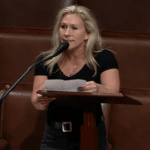




In a surprising turn of events during the recent presidential election, Governor of Minnesota and Democratic vice presidential candidate Tim Walz lost both the national race and his home county, Blue Earth County, to President-elect Donald Trump.
The New York Post reported that this result marks a significant political shift for Blue Earth County, which previously supported Democratic candidates.
Governor Walz, alongside his running mate Vice President Kamala Harris, failed to secure enough votes to win against Trump in several key areas, including his own residence county.
Blue Earth County, part of southern Minnesota, voted with a slim margin in favor of Trump, who achieved 49.6% of the vote there compared to Harris's 48.3%.
The outcome deviated from the county's previous preference, as it had supported now-President Biden in the 2020 elections with 51% of the vote. Trump's success in this county illustrates a fluctuation in political allegiance that was pivotal in reshaping the electoral map.
Historically, Blue Earth County has been a Democratic stronghold, and the 2020 election reinforced this as Biden managed to edge out Trump, who garnered 46.5% of the votes at that time. However, the recent results suggest a growing Republican influence within the region. This change comes despite Tim Walz's deep-rooted connections with the area, both professionally and politically.
Tim Walz's career in Blue Earth County began as a social studies teacher and a football coach at Mankato West High School after relocating from Nebraska as an adult.
This engagement with the local community aided him significantly in his political journey, which saw him flipping Minnesota's 1st Congressional District to the Democrats in 2006. Walz represented this area in the United States Congress for over a decade, solidifying his role as a local Democratic leader.
His tenure as Governor of Minnesota began with a resounding victory in 2018, where he decisively defeated his Republican adversary. These accomplishments make the recent loss particularly notable, as voters in his former home base turned away from the Democratic ticket he endorsed.
Trump's triumph was sealed when he became the first candidate to amass 270 electoral votes required to assume the presidency. Despite the overall Democratic lean of Minnesota, the state ultimately contributed its 10 electoral votes to Harris early Wednesday, in line with its traditional Democratic affiliations.
Minnesota's consistent support for the Democratic Party has been evident since it last favored a Republican presidential candidate in the 1972 election with Richard Nixon.
The backdrop for these election results is a politically active Minnesota, where changes in voter sentiment have reverberated beyond just one county. The shift in Blue Earth County demonstrates a broader national trend where regions that historically supported one party are becoming increasingly competitive.
These dynamics presented both challenges and opportunities for the Harris-Walz ticket. The vice presidential candidate's inability to secure his home county raises questions about the local versus national priorities that swayed voters in this election cycle.
For Walz, the electoral defeat in his backyard adds a layer of complexity to the legacy of his gubernatorial and congressional tenures. Moving forward, political analysts and campaign strategists will likely scrutinize this election cycle's outcomes to better understand the electorate's evolving priorities.
This examination will extend beyond Blue Earth County, as Democrats and Republicans alike assess battleground areas and the national political landscape.
Walz's story encapsulates the challenges faced by local candidates who contend with national sentiments. It underscores the intricacy of American electoral politics and the unpredictable nature of voter behavior.
While Trump's victory in Blue Earth County was unexpected, it showcases the competitive and fluctuating nature of electoral politics, where historical voting patterns are not always a reliable predictor of future outcomes.
As the dust settles from this election, both parties will likely adjust their strategies, focusing on areas where shifts were most pronounced. For Democrats, understanding the causes behind Walz's home county loss could provide critical insights for future campaigns.
For the Republican camp, capitalizing on these newfound gains will be crucial in maintaining momentum and solidifying support in traditionally Democratic areas. As the political climate continues to evolve, attention will be on how both parties navigate this new terrain.



